Chocolate tasting in Mindo
We had enjoyed eating chocolate IMMENSELY in Ecuador, and so we decided to go on a ‘chocolate tour’, where you get to learn about how chocolate is made, and most importantly of all – get to eat tons of chocolate! 🙂
Chocolate is made from the cocoa bean – also known as ‘cacao’ – cocoa beans are the seeds of the fruit that grow on cocoa trees. The cocoa tree is native to the Amazon basin – so South America is in fact the birthplace of chocolate.
Cocoa trees have been commercially planted in massive numbers all over the world now – particularly in West Africa where most of the world’s commercial chocolate is grown. The tree will only grow in tropical areas.
Ecuador has plenty of tropical areas for cocoa trees to grow – including wild trees that grow in the Amazon regions. But Mindo is not one of these tropical areas – it is too high in altitude, and it gets too chilly when it rains for the cocoa trees to prosper. You can plant cocoa trees here and they will grow – but they don’t like it – so it’s not great for chocolate.
So, you might be wondering how/why we are doing a chocolate tour in Mindo? Well, there is a place here that makes chocolate by hand – just to sell locally. They have all the equipment needed to make their own chocolate, and also a cafe, shop and hostal. If you go around 90km down the road from Mindo, then you are in a cocoa tree growing area – so they just bring up the cacao beans from there and make their own chocolate.
The chocolate tour starts with a walk through the garden to look at some cocoa trees – these are trees that they have planted so that you can see what they look like – because of the altitude they don’t grow very well – so they don’t use these trees to make their chocolate.
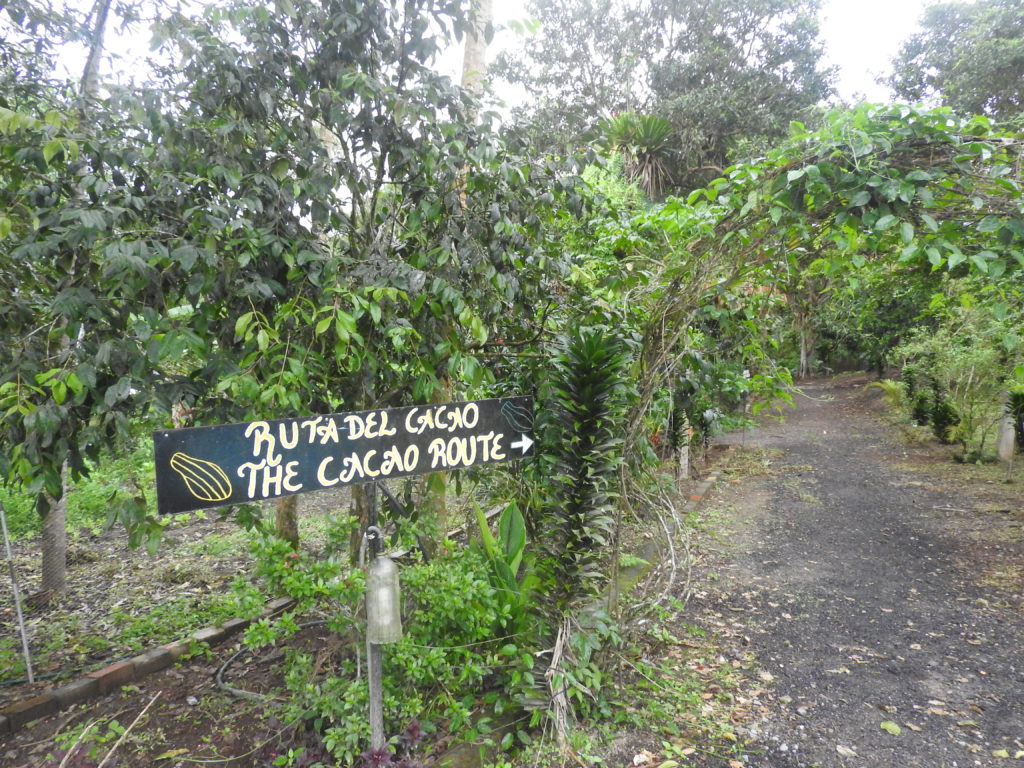
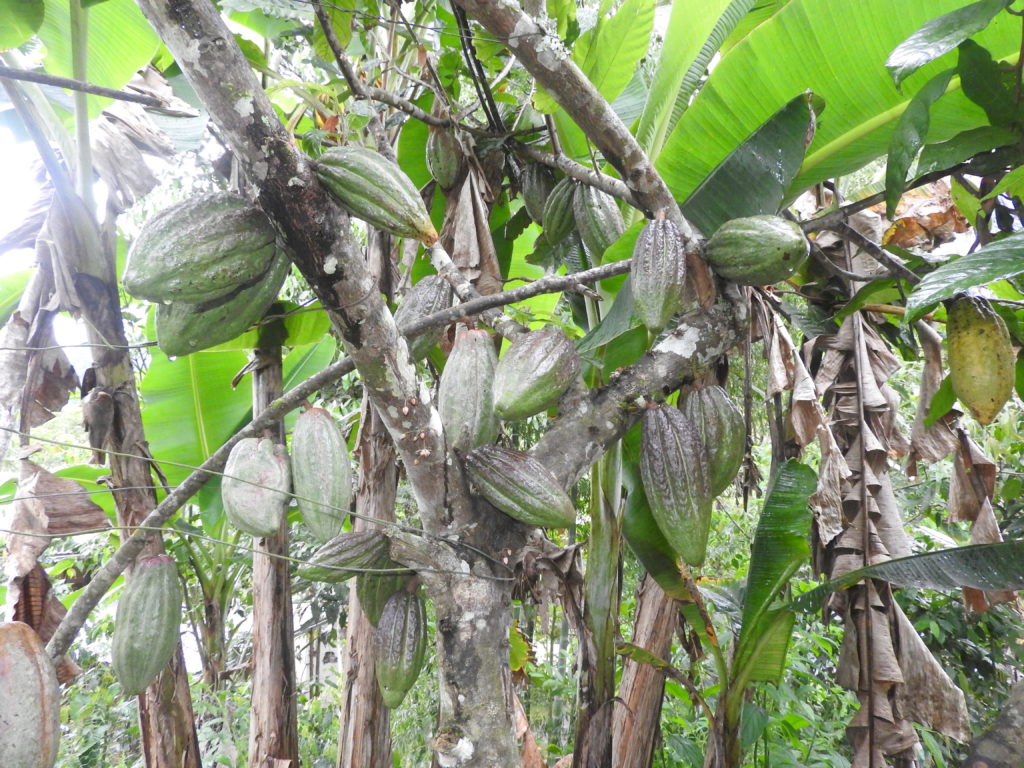

To get the cacao beans, the fruit is removed from the tree and the cacao beans (seeds) are taken out. You can get around 30 – 40 beans from each fruit (pod). The beans are encased in a pulpy/fleshy material. The beans and the pulp are left out in big piles for several days to ferment – this is called ‘sweating’. The thick pulp turns to liquid and drains away – leaving the cacao beans behind. This process apparently is necessary to remove the natural bitter taste of the cacao beans. After the beans have been ‘sweated’, they are left to dry and then roasted.
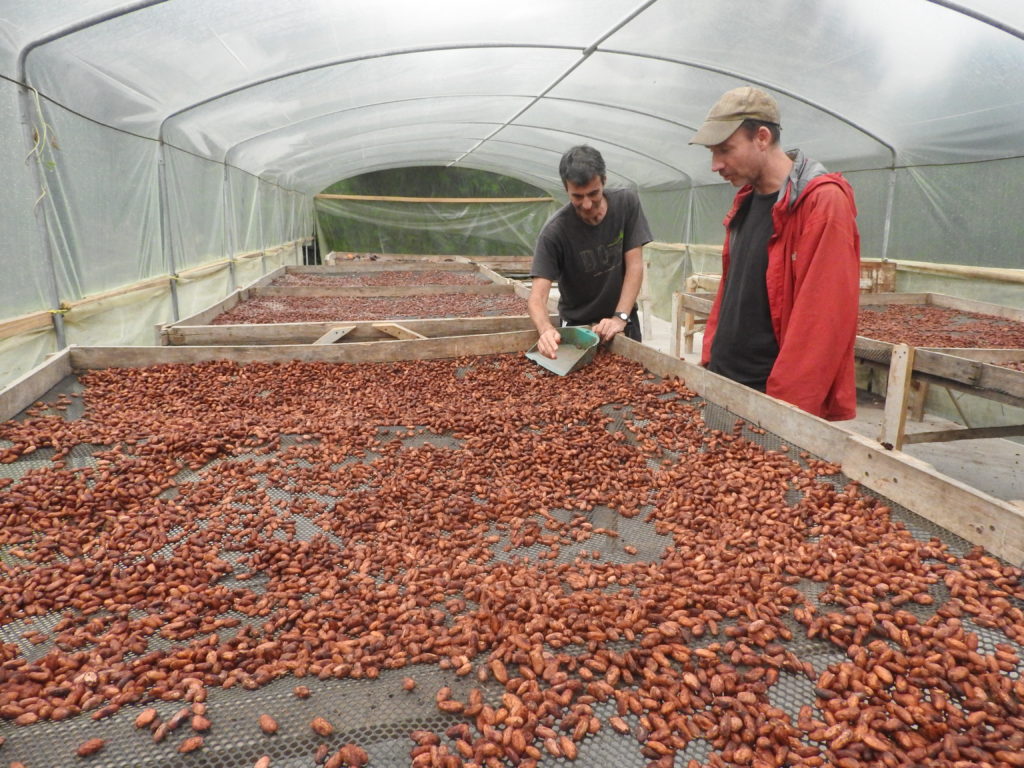
The next step is to remove the shells from the dried beans – this leaves what is called ‘cocoa nibs’. This can be done by hand, but it’s pretty time-consuming and difficult. These guys had a couple of machines to help them out. They have pretty much home-made all of their machines! 🙂
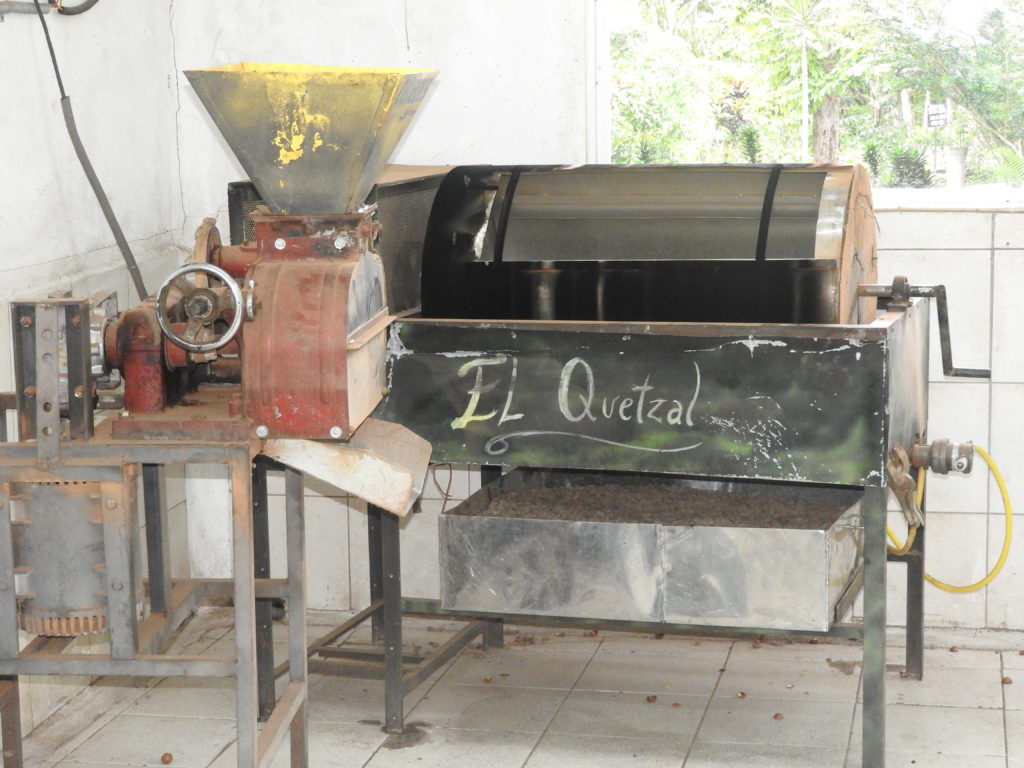
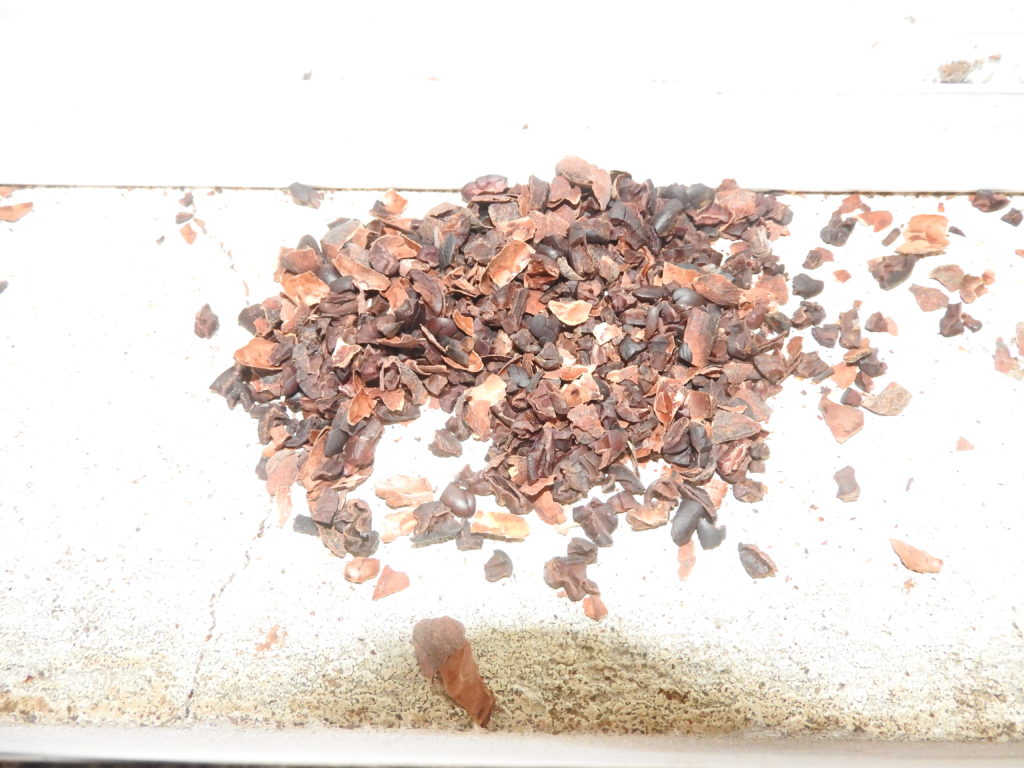
Because the shells are really light compared to the nibs – they can be separated by blowing air over the mix – the light shells get blown away – leaving the cocoa nibs behind.
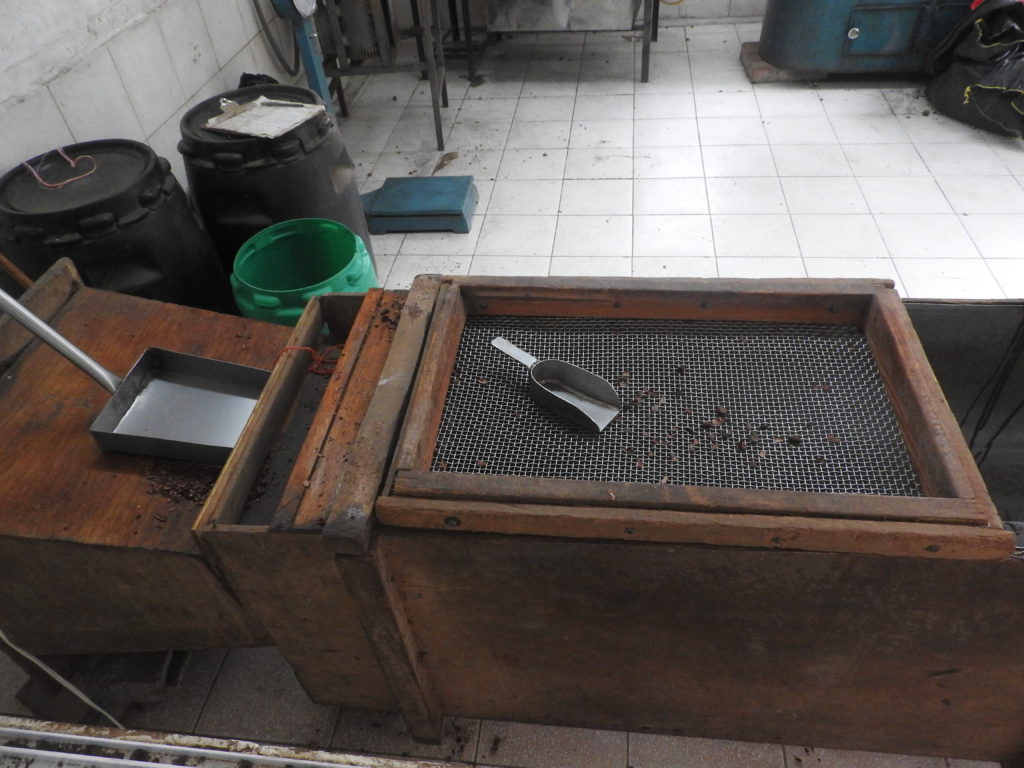
Once you have a bunch of cocoa nibs you are pretty much ready to make the chocolate! 🙂
This is where things get a bit complicated and confusing…. in my view anyway… 🙂
The first stage is that the cocoa nibs get ground up and melted – this produces what is called ‘cocoa mass’ or ‘cocoa liquor’. Cocoa liquor consists of roughly 50% ‘non-fat cocoa solids’ and 50% ‘cocoa butter’. At this stage, the ‘solids’ and the ‘butter’ can be separated, or the whole thing can be left to harden again – which creates a block of ‘cocoa mass’.
So therefore there is ‘cocoa butter’ – the ‘fatty’ part from the cocoa bean, ‘non-fat cocoa solids’ – the ‘non-fatty’ part from the cocoa bean, and ‘cocoa mass’ – which is both of these together – eg, direct from the cocoa bean – unseparated.
Why separate out the cocoa butter? Because to make better tasting chocolate, a bit more cocoa butter is required than the amount already present in the ‘cocoa mass’ – so ‘good’ chocolate is usually made with additional cocoa butter added to the cocoa mass.
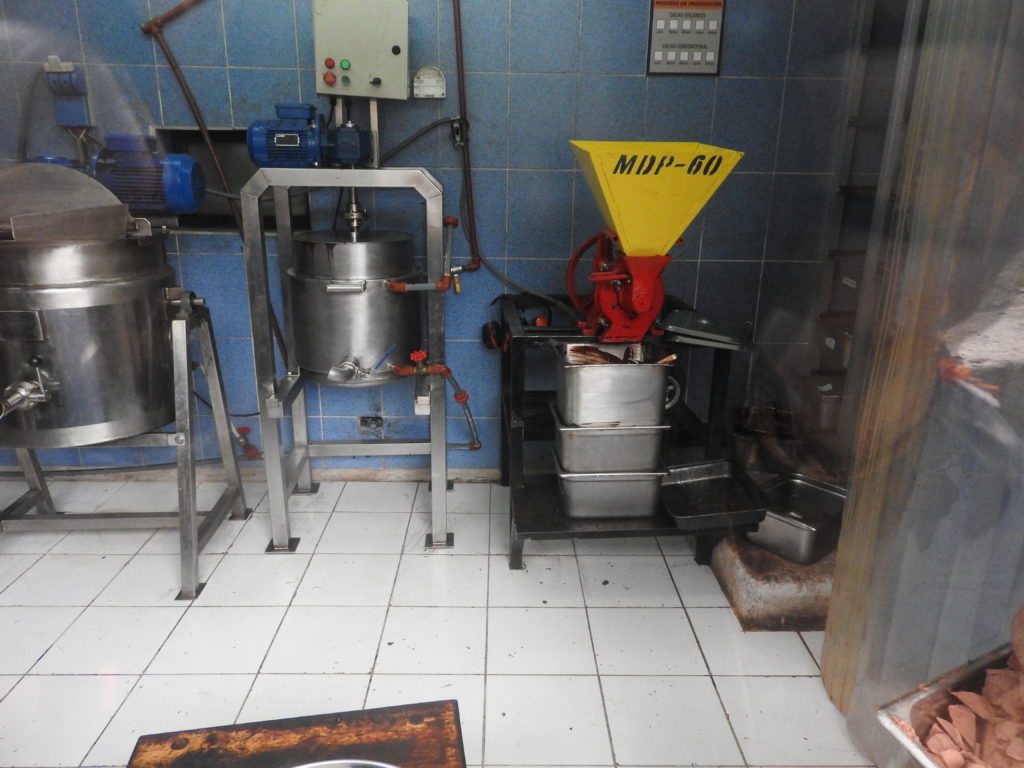
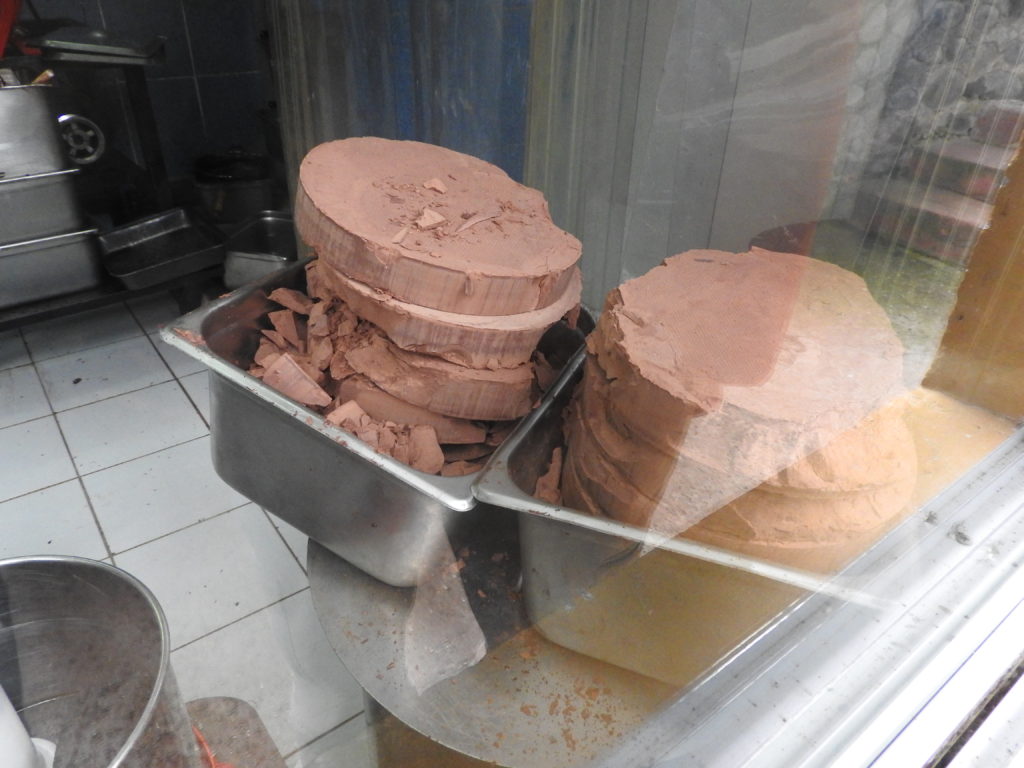
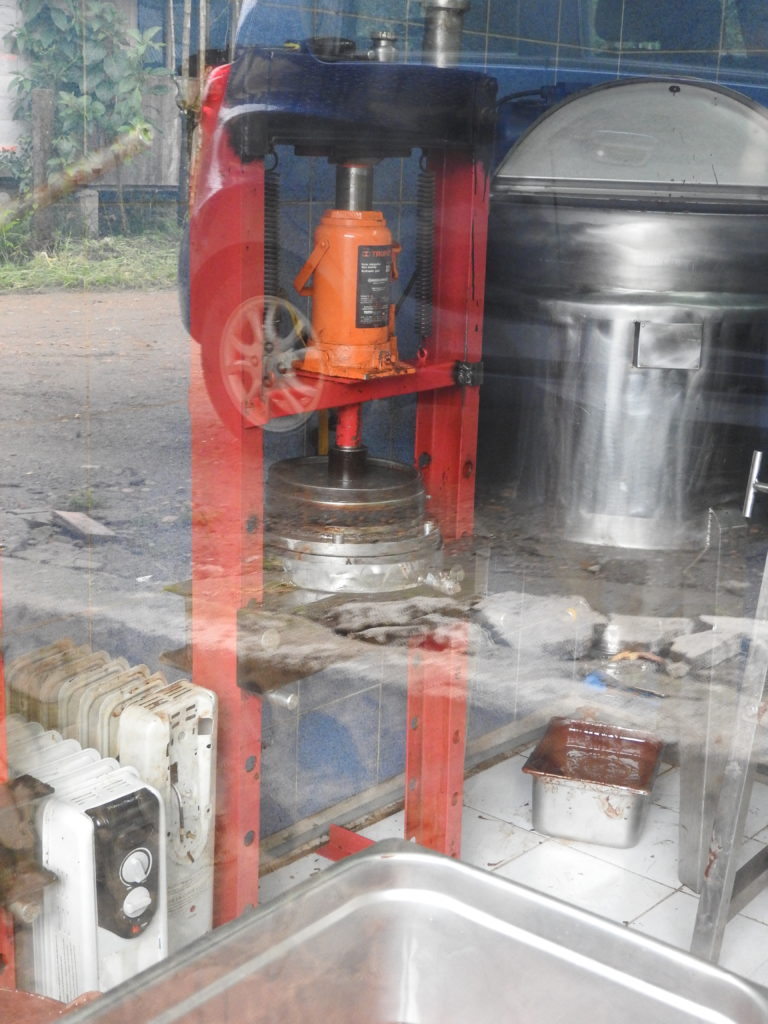
These guys do pretty well with all their home-made equipment, and create a few different chocolate products. Soon it would be tasting time! 🙂 🙂
So.. let’s talk about chocolate bars….
If you take just the cocoa mass and make it into a bar, then what you have is 100% cacao. You don’t need to add anything else at all – it’s chocolate. It tastes very bitter though, and has a very weird texture. If you buy ‘cooking chocolate’ that says 100% cacao – then this is what it’s made of.
Next up we have ‘high-end’ dark chocolate – these are the chocolate bars that you see that say things like ‘70% cacao’, or ‘80% cacao’ etc. In these bars, the ONLY other ingredient is sugar. A decent chocolate bar that says ‘70% cacao’ is 70% chocolate and 30% sugar. These bars usually have additional cocoa butter added, and the 70% refers to the percentage of the ingredients that is made up of both cocoa butter and cocoa mass. The cocoa butter is the most expensive part, and so extra cocoa butter is added to help with the texture and taste – not to save money.
Big corporate manufacturers of chocolate of course want to make their chocolate as cheaply as possible – so therefore are prone to adding ALL KINDS of other ingredients that they can get away with (as long as food regulations allow them…).
Which brings us to ‘milk chocolate’…. milk chocolate clearly has milk added – but what else? Here is a list of the ingredients of a Cadbury’s dairy milk bar:
Milk, sugar, cocoa butter, cocoa mass, vegetable fats (palm, shea), emulsifiers (E442, E476) and flavourings.
So, there is lots of milk, lots of sugar, and some vegetable fats so that they can cut down on the amount of cocoa butter that they need… which begs the question – how much chocolate is actually in there? Well, it also says: Cocoa Solids 20% minimum
So at least 20% of the choclolate bar is ACTUALLY CHOCOLATE! My bet is that it’s not a lot more than 20%! 🙂 Yes, it seems that lots of chocolate bars don’t really have much chocolate in them at all…! It also seems to me that the only reason they put ANY chocolate AT ALL in chocolate bars is because of government legislation. The legal minimum chocolate requirement for ‘milk chocolate’ in the UK and Australia is 20%. In the United States it’s only 10%!! And guess what? The famous Hershey milk chocolate bar in the U.S. is 11% chocolate – no wonder it tastes so rough! 🙂
ANYWAY, back to the chocolate tasting here in Mindo…
In order to show us how ‘simple’ chocolate worked, we were given a tub of liquidy cocoa mass, a bowl of sugar, and a few flavours like ginger and chilli. We could then take spoonfuls of all of these things and mix them together to create our own flavours – which varied according to how much sugar we added, and if we added a flavour.


We were also given a tray with all their different chocolate varieties to try – they have various different percentages of cocao, and also chilli, coffee, and ginger flavours.
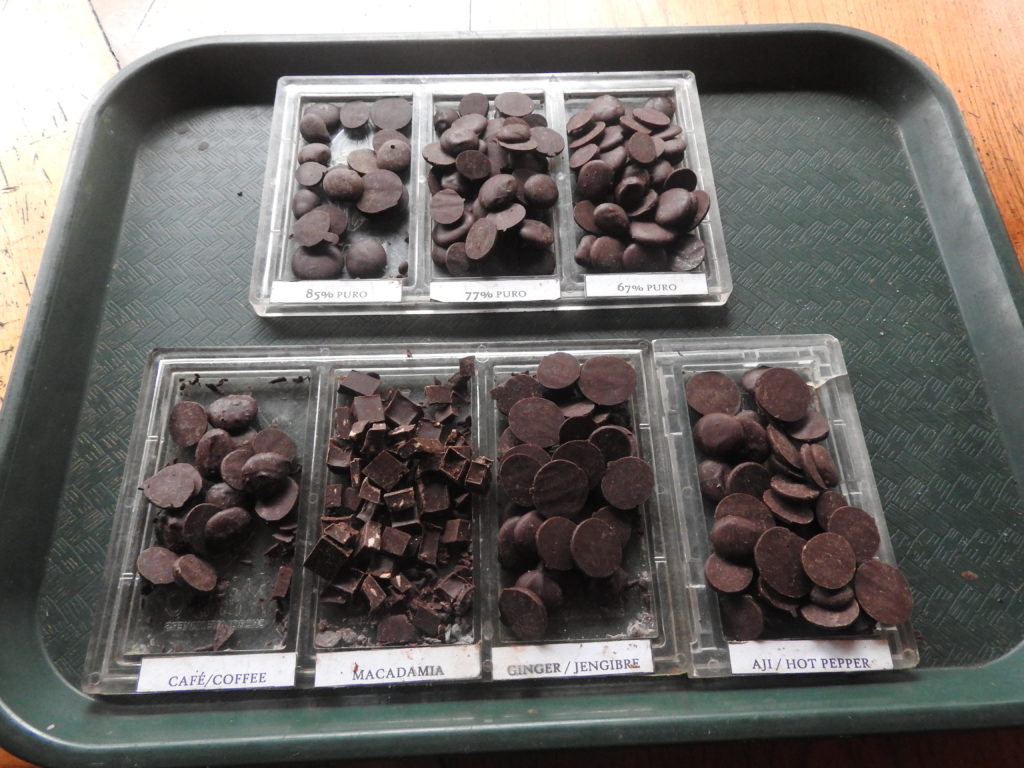
We ALSO got given a chocolate brownie to eat… I have to say that we totally overdid it, and consumed so much chocolate and sugar that when we got home we had big headaches and had to lie down?!
If you are thinking that it sounds pretty easy to make chocolate, then you should know that there is a bit more to the process in order to get to a final delicious chocolate bar – you need to read about conching and tempering…
So, apart from the extreme overeating aspect, it was a great afternoon and we learnt a lot about chocolate! 🙂

